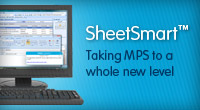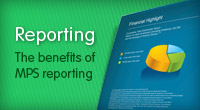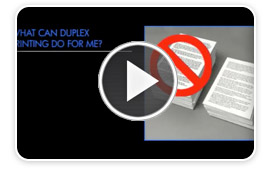


|
What to ConsiderHow do you decide what printer or MFP to purchase?Do you simply replace your current device with one that’s just like it? How do you know that is the right fit and you are not over-purchasing options you don’t need, or not getting one with capabilities that would help you be more productive? There are literally thousands of models to choose from, and when you start looking, the sheer number of the options available can be dizzying. Network CapabilityWith technology today, perhaps the most important feature to choose first is the network capability of your new device. Though the original intent may be to connect the device to a local computer, down the road the ability to add the printer to a network is much easier and more cost effective if it is a factory installed option. In addition, many models now offer wireless connectivity as well. Single or Multifunction PrinterOne of the next things you need to decide is whether you need a single or multifunction printer (MFP). MFP’s can help consolidate cost and space savings by working as a printer, copier, scanner, and fax machine all in one. With this added capability, you may wonder why you would chose not to purchase an MFP. Printer-only devices tend to be faster, and have more specialized features for printing higher quality or graphics, and often a lower cost on the consumables such as toner. If an MFP is chosen, you then need to determine what other features you will need. Do you need fax capabilities? If you choose scanning, do you need the device to scan to a file on your network or PC, directly to an e-mail, or both? You also need to be sure you are getting and Automatic Document Feeder (ADF), which is the attachment on top of the flatbed and accepts multiple originals at one time to scan, copy, or fax. Now that the easy options are chosen, it’s time to get down to the specifics. For this you will need to know more details of how you print and what kinds of documents you will be printing. Color or Black-and-White?Perhaps the next choice to make is do you need color? With the low initial cost of color devices today, many printers are automatically chosen with this capability without the realization that color is still 5-10 times more expensive to print than black and white. If you are only printing letters and other similar documents, you will best be served with a black-and-white printer, however if you want the ability to print marketing materials, charts and graphs, or other visuals, today’s color printers can often give you great quality and help you save money by printing these internally rather than at a print shop. Print VolumeThe next step is to determine approximately how many pages per month will be printed. This will be determined by looking at how many users will be printing to the device, and what types of documents are typically printed, and perhaps how much paper you normally purchase in a particular time period. If a device is chosen that is meant for 500 pages per month and you are printing 2,000 pages, your total cost of ownership will be significantly more, as the lower price devices tend to have higher costs of consumables. These prices can range from $.01 to $.05 per page for black-and-white toner. See our page on Total Cost of Ownership for more information. In addition, many printers list a “duty cycle”. DO NOT use this duty cycle as the volume you should be printing on the device. The duty cycle is simply the number of pages the device is capable of printing in a given time period, but not the optimum number of pages. You should always try to determine the recommended volume for your device, which can often be found in the manufacturer’s specifications, or typically somewhere around 25 to 30% of the actual duty cycle of the device. If you are printing more than the recommended volume, the device will tend to have more maintenance issues and a shorter overall life cycle. Your print volume, and the types of documents you print, will also play a significant role in determining the speed of the printer you need. If you are only printing one or two page documents, speed is not going to be an important factor, however if you are printing longer documents it can affect your productivity. In addition, if you are printing longer documents, you can save up to 40% on your total cost(including paper) of that print job by choosing a printer with a duplexing(automatic two sided printing) option. Paper SelectionFinally, you need to take into consideration the types of paper that you will be printing on, and if color intensive, the quality you will need. Different printers accept paper of varying weights and gloss levels. If your device is not made for the paper you are utilizing, you will likely experience frustration with excessive paper jams and prints that do not meet your expectations. Many people also purchase tabloid (11x17) capable devices because they think they might need this option. Did you know that only 1% of office printing is tabloid sized printing, and that this option alone will almost double your investment price of the device? If tabloid printing is not crucial or a highly utilized option in your environment, you will likely save the most money by having those few documents printed elsewhere when needed. We Can Help with This Important DecisionTo make a long story short, printer purchases must be made carefully. If the initial cost of the device is your main reason for purchasing the device, you will typically end up spending more over the lifetime of the device in consumables, lost productivity, and lack of ability to accomplish the tasks that are crucial to your business. Contact one of our experts today to help you make this important decision and end the guesswork. |


